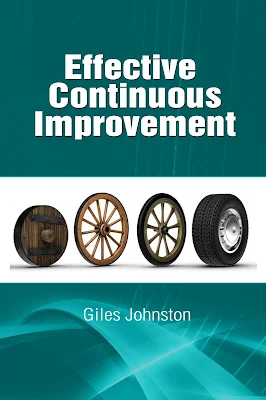When you are leading continuous improvement projects, it can sometimes feel lonely if you seem to be the only one outputting ideas and options.
About the author:
Giles Johnston is a Chartered Engineer who specialises in helping businesses to grow and improve through better business processes and embracing Kaizen.
Giles is also the author of Effective Root Cause Analysis and 'What Does Good Look Like?'.
Talking to yourself... that's how it can feel.
A really good strategy, to get your team involved, is to share some building blocks with them. Instead of feeling like you need to provide a working solution, teach your team to 'fish'.
Can you remember that phrase?
“Give a man a fish, and you feed him for a day; teach a man to fish and you feed him for a lifetime.”
We can change it to something like this:
"Give a team a solution and they'll continue to expect you to produce all the solutions; teach a team building blocks of continuous improvement and you can unleash them on all your future challenges."
I might be taking some liberties here, but I think you get the gist of what I am trying to say.
There is a trade off with doing continuous improvement and teaching ideas, but getting this balance (between learning and implementing) is worth getting right. The reason for writing this article today was prompted by an experience I had today with a team.
We had a team meeting and it was quiet. I did a quick demonstration, of a few software tools, and then the conversation was buzzing. In just a few minutes, the number of ideas to explore, into a final working solution, was superb.
So, if you have a similar experience, try teaching the team a few things. Or, get one of your team to teach them a few things if the topic of discussion isn't your area of speciality.
Whatever you do, do something different if you get a lull in your continuous improvement meetings like the one I have described.
Giles
 |
| Available from Amazon |
About the author:
Giles Johnston is a Chartered Engineer who specialises in helping businesses to grow and improve through better business processes and embracing Kaizen.
Giles is also the author of Effective Root Cause Analysis and 'What Does Good Look Like?'.